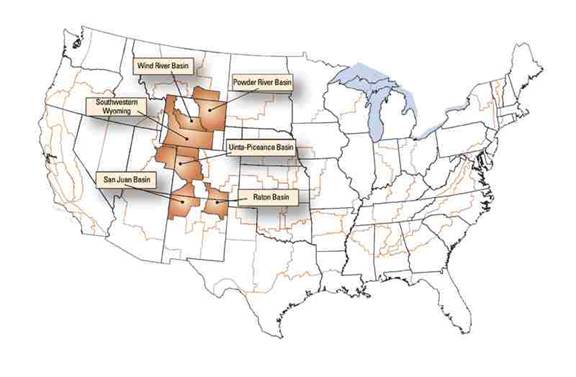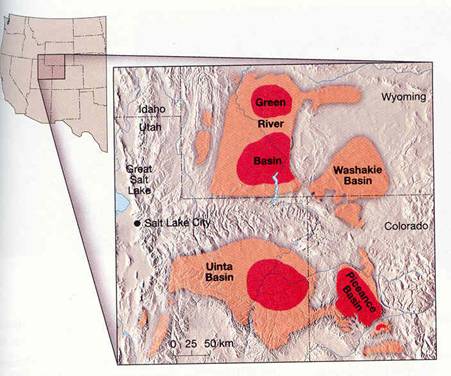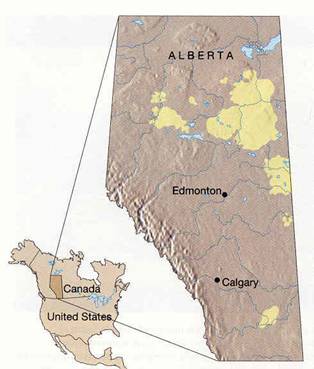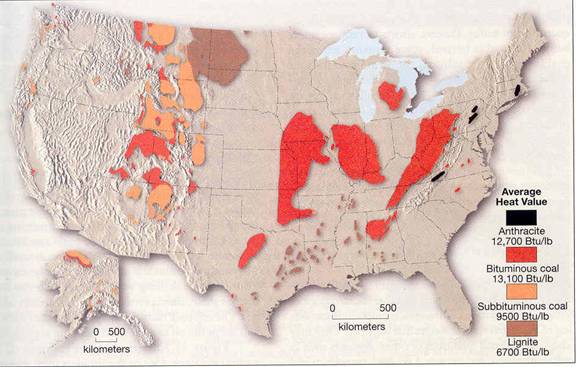|
The Value of the Remaining Wilderness
By
Dale Allen Pfeiffer
© Copyright 2005, From The Wilderness Publications, www.fromthewilderness.com. All Rights Reserved. May be reprinted, distributed or posted on an Internet web site for non-profit purposes only.
April 11, 2005 0900 PST (FTW) – Congress is about to open ANWR to oil drilling. Conservative pro-drilling groups have established propaganda sites on the web (ANWR.com, ANWR.org, etc.) touting drilling as humane and responsible, and claiming that the resources of ANWR will feed our energy demands-state by state-for many years to come. Their figures are unrealistic; they must be considering every bit of oil which has even the remotest possibility of existing within ANWR. And they must also be considering every last drop of it to be extractable.
According to the most reliable figures published by the US Geological Survey, found in their 1998 assessment1, ANWR contains somewhere between 5.7 and 16 billion barrels of oil (Gb), with the most likely figure being somewhere in the neighborhood of 10.4 Gb. Recoverable reserves are estimated to lie between 4.3 and 11.8 Gb, with a mean value of 7.7 Gb. The United States consumed 7.3 Gb of oil in 2003. So, under the best circumstances ANWR could only supply us with a little over one year and a half worth of oil. Compared to other notable oil fields ANWR is 7/100ths the size of Ghawar, and holds about the same comparison to the West Siberian Basin. It is about 1/4th the size of the North Sea Graben deposits. The USGS reports that the entire region of northern Alaska ranks 25 on a listing of world hydrocarbon deposits.2 For this we are willing to destroy one of the last pristine habitats on the planet?
The pro-drilling websites claim that drilling will not damage the environment. Some of their material even goes so far as to say that the wildlife will benefit from the careful management of the oil industry. Yet two separate scientific studies point to the opposite conclusion. In an exhaustive study published by the National Academy of Science, a team of researchers studied the cumulative effect of oil and gas activities on the North Slope of Alaska.3 The researchers found environmental degradation across the board, with loss of habitat and diminished quality of life for most of the wildlife. A study by the USGS found similar results, particularly with regard to Caribou herds.4 The USGS study looked specifically at caribou within ANWR and found that oil and natural gas activities would have a negative impact upon the caribou. ANWR holds one of the largest remaining caribou herds in the Arctic. And that herd is now endangered.
But what does a herd of caribou matter when compared to a few years of domestic oil production and a nice profit for a few people in key places? When the lights go out in the lower 48, and gas stations begin rationing, will we allow a bunch of ungulates to stand in the way of a slight increase in domestic energy production?
As goes ANWR…
ANWR is only the most noticeable tip of the iceberg here, as the White House and Congress are working together to open our entire remaining wilderness to resource production. Other prominent targets include opening protected lands in the Rocky Mountain fore-thrust and elsewhere to energy production, and opening all of our national forests to logging (in doublespeak language, in order to protect them from forest fires). Nor is this madness confined to the US. Canada is preparing to rip up much of Alberta in order to reach the precious tar sands. In the process they will create a new mountain range composed of tailings, and the world's largest waste water reservoir.
 Natural gas resources of the Rocky Mountain Region Natural gas resources of the Rocky Mountain Region
Image from Coal Bed Gas Resources of the Rocky Mountain Region,
USGS, last modified Jan. 28th, 2004
http://pubs.usgs.gov/fs/fs-158-02/fs-158-02.html

Oil Shale Resources of North America
Image from Earth; an introduction to physical geology, 6th Edition, Tarbuck & Lutgens
Prentice-Hall, 1999.

The Athabasca Tar Sands of Alberta, Canada
Image from Earth; an introduction to physical geology, 6th Edition, Tarbuck & Lutgens
Prentice-Hall, 1999.

Coal Fields of the United States
Image from Earth; an introduction to physical geology, 6th Edition, Tarbuck & Lutgens
Prentice-Hall, 1999.
We are witnessing the start of a mad scramble for crumbs as Peak Oil announces the end of abundance. Since the dawn of the industrial age, and mostly within the last century, we have gobbled up resources at a prodigious rate. Within the next few decades we will see shortages of everything from phosphorus to iron, aluminum and other various metals. We will soon face shortages of wood, fertile soil and drinking water. Even if we continue to fend off this initial scramble to open the remaining wilderness, the question is for how long? From here, the situation will only worsen. And how long can we keep the vultures out of the remaining wilderness once resource depletion once resource depletion begins to impact our daily lives?
Is our remaining wilderness only valuable to us as a repository of resources against the fast approaching day when they will be needed? Is that why we set these lands aside and protected them from commercial enterprise? Are we so far removed from the wilderness that we can no longer remember its real value?
The Value of the Wilderness
It's often said that the ultimate value of the wilderness lies in biodiversity. The remaining wilderness holds the tattered web of life on this planet together. Species extinctions are continuing at an alarming rate as a result of the activities of industrial man. The web of life is already off balance; if we pillage the remaining wilderness, we risk severing the remaining key threads in that web. And no one can foresee where this chain of effects will lead.
So are we utterly dependent on a modicum of biodiversity to keep our ecosystem from total collapse. But we must also regard the remaining wilderness as the only grounds for hope that life may continue on this planet after humanity is gone.
Others emphasize the aesthetic dimension of the wilderness. To ruin the last areas where the wolves trot and the falcons soar would be tantamount to defacing the Mona Lisa or bulldozing the Sistine Chapel. Sadly, the history of both art and nature at the hands of our species shows that beauty is no defense.
Ethics often gets mentioned in connection with the wilderness, usually in the form of the truism that destroying the remainder of the natural world is morally wrong.
But I want to emphasize a different ethical dimension of the wilderness: it is the sanctuary of freedom, and that this is its greatest value. If we are to take seriously the founding images and stories of American identity, we must regard the wilderness as the soul of America: it gave the native peoples their ways; it called to the frontiersmen, the mountainmen and the explorers; and because it bespoke a dignity and self reliance that Europe had lost, it was the source of an American spiritual strength that found expression in the Declaration of Independence and in Whitman's Leaves of Grass.
The Sanctuary of Freedom
In the American lexicon, freedom has come to mean the freedom of corporations to generate profit and the freedom of the public to consume. The ugly irony here is that consumption itself is antithetical to freedom, because chasing the illusory fulfillment of artificial needs prevents us from determining our own real needs. If you own a car, or a house, or any other possessions, then you are tied down by your car insurance, your mortgage, your bills, your consumer debt, and the material things themselves. If freedom is measured by the ability to do whatever you want, whenever you want and wherever you want, the freest person you are likely to see is that homeless guy riding his bicycle and rifling through garbage bins. He has his risks and his limits, but he isn't toiling for a salary, servicing debt, or storing possessions. Is he free?
As Thoreau understood, those who have lived in the wilderness are the freest people on the planet. So long as there remains some wilderness where people can go to escape the ties that bind, freedom will retain some of its former meaning.
The Enemies of Freedom
Our economy is based upon debt and consumption. Without mounting debt to create more profit, and without more consumption to drive the whole machine, our economy would grind to a halt. We are the captives of this process, and the freedom of the wilderness is antithetical to our modern way of life. In childhood, we are loaded up with artificial needs for endless non-essential goods and services; throughout our school years we are trained to become productive servants of the economy, and perhaps the main rite of adulthood is now the (debt-financed) ownership of a car. Nowadays, before most young folks even graduate high school, they already have a credit card and a consumer debt.
The wilderness of this entire continent has been reduced to a few fragmentary enclaves of biodiversity in remote ecosystems where survival is hardest. And there are forces at work in our government that want to ban all public use of public lands, leaving them reserved for government and industry.
The knowledge of how to live in the wilderness - that is, the knowledge of how to be free - has been all but forgotten. It is a wonder that this knowledge survives at all. But it can be found in survival manuals and anthropological treatises. Tom Brown Jr. has done a very good job of assembling this knowledge and making it widely available. And if you want to read a very basic overview of the subject, you can read my article, A Matter of Survival. While this article leaves out a great deal, it contains the basics. If you put them into practice, then you will never have to worry about starving or going homeless, and you will have a taste of what freedom really is.
Giants in Their Steps
In each remaining wilderness area there are a few people who are still living the free life. They are reclusive, and it can be very hard to make contact with them. But they are to be found, particularly in the Canadian Rockies, British Colombia, the Yukon Territories and Alaska. In this region of the North American Cordillera, there is still a big open land where people can live freely. But this land is coveted for its timber and its mineral wealth. And this age of depleted resources may very well bring these remaining practitioners of freedom into conflict with modern civilization.
I spent many years writing a novel about this very subject, an epic entitled Giants in Their Steps. It explores the themes mentioned in this essay, and gives the reader a taste of true freedom - a subjective knowledge of what is at risk if we do not change our relationship with nature. My hope for Giants in Their Steps is that it will make our shared predicament more personal, more deeply felt, and so more likely to be overcome. The book can now be purchased directly from the publisher, through amazon.com, or by special order wherever books are sold.
The years to come will be difficult, but we must learn to curb our rampant consumption. We must seek a more sustainable way of living. We must realize the true value of the wilderness. Such is the price of freedom.
1 Arctic National Wildlife Refuge, 1002 Area, Petroleum Assessment, 1998, including Economic Analysis, Bird, Kenneth J. & Houseknecht, David W. USGS, 1998. http://pubs.usgs.gov/fs/fs-0028-01/fs-0028-01.htm or http://pubs.usgs.gov/fs/fs-0028-01/fs-0028-01.pdf
2 Ranking of the World's Oil and Gas Provinces by Known Petroleum Volume, Klett, T.R., et al. USGS open file report 97-463, last modified August 2004. http://pubs.usgs.gov/of/1997/ofr-97-463/97463.html
3 Cumulative Environmental Effects of Oil and Gas Activities on Alaska's North Slope, authors. Nat'l Academies Press, 2003. http://books.nap.edu/openbook/0309087376/html/index.html
4 Arctic Refuge Coastal Plain Terrestrial Wildlife Research Summaries, authors. USGS, date. http://www.absc.usgs.gov/1002/index.htm

Please Note
This function has been disabled.
|
|
|
|



